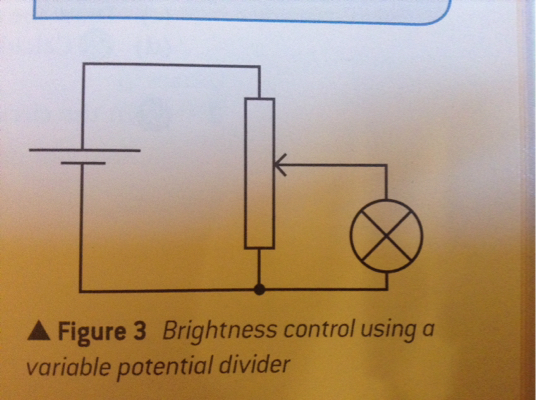For example, the
 the diagram in my text book
https://i.sstatic.net/IEzwR.jpg
shows shows a filament lamp, in series with a uniform resistive wire, which can have its voltage and current varied by moving the sliding contact, e.g., a rotatable wheel. However, why is a potential divider able to reduce the current through the filament lamp to zero, but a variable resistor in series with the filament lamp cannot reduce current to zero, I.e., there is still a very small amount of current through the lamp when a variable reisistor is used.
the diagram in my text book
https://i.sstatic.net/IEzwR.jpg
shows shows a filament lamp, in series with a uniform resistive wire, which can have its voltage and current varied by moving the sliding contact, e.g., a rotatable wheel. However, why is a potential divider able to reduce the current through the filament lamp to zero, but a variable resistor in series with the filament lamp cannot reduce current to zero, I.e., there is still a very small amount of current through the lamp when a variable reisistor is used.
